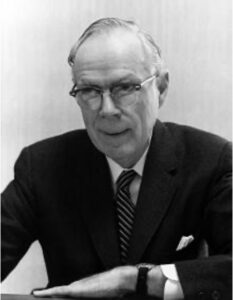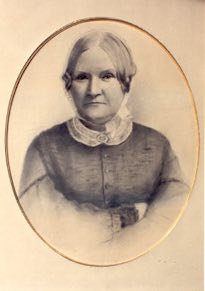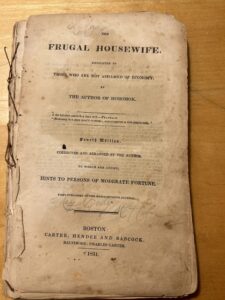Cookbooks hold stories beyond simple annotations or dog-eared pages. Each stain holds a memory, each inscription is a recipe, and every modification is a history waiting to be uncovered. Anyone who cooks or bakes regularly is likely making changes or additions to their recipes, which calls for immediate and specific notations within the physical book. Dickinson’s edition of The Frugal Housewife by Lydia Maria Child is not an outlier. As a book in extreme disrepair and one where every page has a stain or note, this cookbook was well-loved.
Child’s intended audience for this book is made explicit in its full title: The Frugal Housewife: Dedicated to Those Who Are Not Ashamed of Economy. The cookbook is intended for housewives in the mid-nineteenth century who are looking for cheap, easy, quick recipes and remedies. In other front matter, Child makes a note that this fourth edition includes an additional section titled “Hints to People of Moderate Fortune.” She states that her intentions for the book are “written from the same motive, viz: an honest and independent wish to be useful.” This book intends to be useful and frugal, evident in both the long title and additional note.
This 1831 edition did, in fact, reach multiple frugal housewives. From what I can tell, I think the cookbook reached at least three different owners. The first owner is Mrs. Mary Webb Cady. She made many notes and additional recipes throughout the entirety of the cookbook, writing and stamping her name across much of the front matter. She was either very possessive of this book and the many additions she made, or she was simply ensuring that she never lost the book (Figure 2). A detailed internet search revealed a woman named Mary Webb who married Mr. Hiram Cady (Figure 1). While I cannot be certain that this Mary Cady is the same owner, her name and signatures line up, and the timeline would make sense, as she was born in 1806 in New York. Unfortunately, I cannot find much further information on her. Due to the era and societal norms, we can assume that Mrs. Cady was a housewife, and her many notes and additional recipes throughout the book show that she spent significant time cooking and baking.

Figure 1: Marriage Note in the Cady Family Bible

Figure 2
I assume another owner also possessed this cookbook after Mrs. Cady due to a separate handwriting and darker pencil used for some drawings and recipes. While most of the additions to the book are in the same handwriting and light-colored pencil, and the many recipes match with the handwriting of the signatures, there are a couple of signatures at the very back of the book in much darker, less discernable handwriting. This makes me assume that there was indeed a second owner of this edition of The Frugal Housewife, but they either did not own the book for long or did not use it nearly as much as the previous owner due to their general lack of marginalia.

Figure 3: Recipe on top of page is Mrs. Cady’s, Recipe on bottom of page is our unknown owner’s
In a discussion with Malinda Triller-Doran, an archivist and librarian at the Dickinson College Archives, I learned that this book’s passage to the Dickinson Archives is not fully clear, but it is assumed to be part of the large donation from Charles Coleman Sellers’s Library. Charles Coleman Sellers was a librarian and curator for Dickinson College on and off between 1949 and his death in 1980. Sellers was also an author and librarian at other institutions as well, and his biography in the Archives states, “Sellers is best known in the Dickinson community for his Dickinson College: A History, published in conjunction with the bicentennial celebration of the College in 1973.”

Figure 4: Image of Charles Coleman Sellers
Ms. Triller-Doran informed me that after he died in 1980, he donated his collection/personal library to Dickinson. It is presumed that The Frugal Housewife was one of these donated books based on the timeline it was donated and the general lack of information on its journey to Dickinson. Only two other cookbooks lie in the archives: The Cook’s Oracle and Housekeeper’s Manual by William Kitchiner (published 1830) and American Domestic Cookery, Formed on Principles of Economy, for the Use of Private Families by Maria Eliza Ketelby Rundell (published 1822), neither of which are recorded to be a part of Sellers’ donation. While The Frugal Housewife’s journey to Dickinson remains unclear, it continues to hold significant history and information about its previous adventures.
This edition of The Frugal Housewife has not been rebound and is completely falling apart. Most of the pages are no longer tied or glued together, and the front and back covers have completely fallen off. It is now held together by a gentle string around the entirety of the book and must be untied to open and re-tied once the reader is done. This indicates that the book is either not used much anymore (as there is no reason to rebind it) or the disrepair has happened more recently than one would think. If it has not been rebound yet, we may be able to assume that it did not need to be rebound until quite recently. A book this old and well-used is expected to be run down, and the fact that it was owned by a librarian for the last century or so makes me assume that the reason for its current state of disrepair is that the librarians who have looked after it had not wanted to interfere in the history of the book itself. Rebinding it may have been frowned upon since it would hide the historicity of the book’s frequent use, which is made evident by its disrepair, or may have simply been too expensive. We can assume much about this edition of The Frugal Housewife by its disorder, stains, marginal notes, and added recipes. What many may view as ruin or destruction has only added to the value and intrigue this cookbook holds.
Works Cited
“Brief Life History of Mary.” FamilySearch.Org, ancestors.familysearch.org/en/LD5F-34T/mary-webb-1806-1876. Accessed 1 Dec. 2024.
“Charles Coleman Sellers (1903-1980).” Charles Coleman Sellers (1903-1980) | Dickinson College, archives.dickinson.edu/people/charles-coleman-sellers-1903-1980. Accessed 1 Dec. 2024.
Triller-Doran, Malinda. Personal Interview. 26 November 2024.







